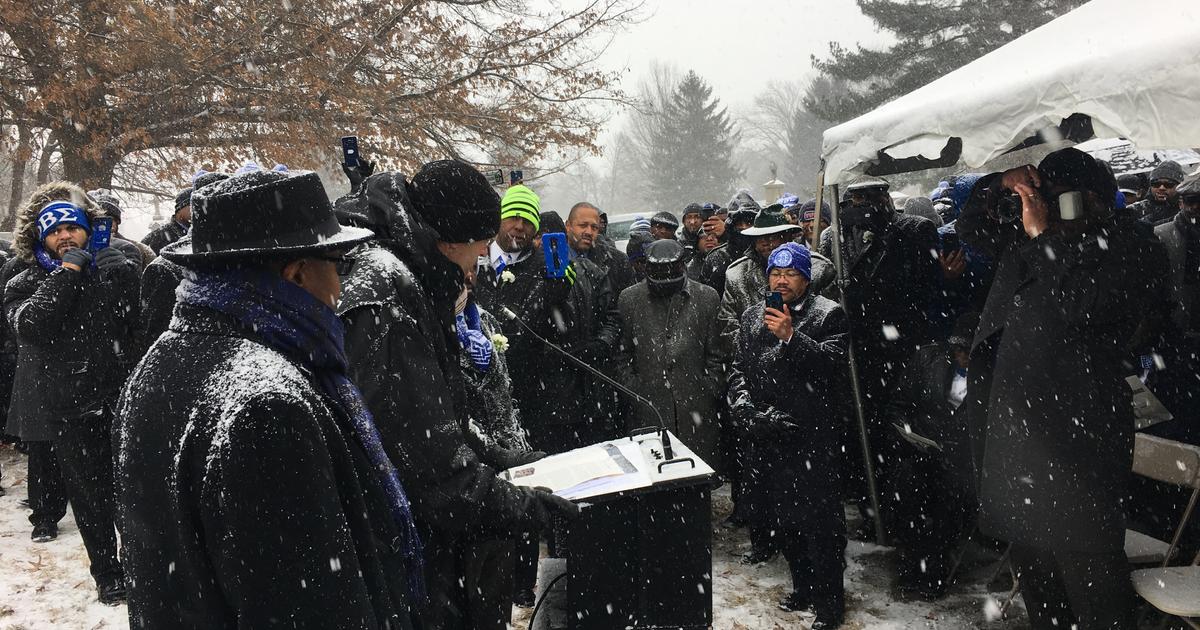Charles I. Brown gets proper burial
A founder of the 109-year-old international Black male fraternity, Phi Beta Sigma Fraternity, Inc., was long “missing.” He is now found.
For serious genealogy researchers, it is a joyful and encouraging example of how customized techniques resulted in a fraternity victory and for Black genealogy research.
The absence of Charles I. Brown on earth was recorded beginning in 1924. In 1999, a small group of tenacious Sigmas, led by their “International Historian Mark “Mallet” Pacich, began a search on the whereabouts of their founder.” In 2015, the men of Phi Beta Sigma, found Brown’s body and they commenced with burying him with proper rites. Facts about his whereabouts during the missing years are still trickling into the fraternity.


“He got lost,” said Rev. William Major during a Founders Day program in metro Atlanta. “Through genealogy research … he was found. He died in 1981,” Major said.
Major’s remarks were emotionally delivered in honor of the three founders of Phi Beta Sigma during the 2023 Metro Atlanta Founders Day program that included the fraternity’s sister organization, Zeta Phi Beta Sorority, Inc. The two Black Greek-Letter entities are the only ones constitutionally bound in its founding. Dr. Ann Wead Kimbrough of Good Genes Genealogy Services, Inc. is a member of Zeta Phi Beta Sorority, Inc.

Major and Kimbrough
Rev. William Major, left, and Dr. Ann Wead Kimbrough at their Fraternity’s and Sorority’s Founders Day observance in Decatur, GA. (Photo: Provided by Ann Wead Kimbrough)
On Jan. 9, 1914, on the campus of Howard University in Washington, D.C., Brown, along with A. Langston Taylor and Leonard F. Morse, founded Phi Beta Sigma Fraternity, Inc. Today, the international organization is comprised of more than 150,000 college-educated and professional men, predominantly of African American origin. Since its inception, Phi Beta Sigma has been open to men of all race, religion, class and national origin.

The fantastic search for the Phi Beta Sigma Founder Brown is well documented. What makes the search for Brown remarkable: Full use of available research resources. Flexibility and strategy are the keys to success in genealogy and ancestry research. In one blog, these words are instructive to all researchers:
THE SEARCH FOR CHARLES I. BROWN
The purpose of this blog is to gather information relating to Charles I. Brown. A most honorable founder of Phi Beta Sigma. We by no means claim a patent on the subject, nor are we seeking to upstage those who have done research prior to ours. We are willing to accept any and all help with this project. This is a plea to all brothers if you have any information, be it rumor, gossip or speculation please post it here.
http://charlesibrown.blogspot.com/
Details of the successful search
That is valuable content within the search-for-Brown blog:
Founder Brown is said to have been born in Topeka, Kansas in 1890. Census records show that his father was Rev. John M. Brown and that his mother was Maggie M. Brown. However, records at Howard University from 1910 have Founder Brown living at 1813 Titan Street in Philadelphia, Pennsylvania. He was very cordial and very popular with the student body and Howard University Administration. He is credited with choosing the 9 charter members of Phi Beta Sigma Fraternity. Founder Brown founded the Delta Chapter of Phi Beta Sigma at Kansas State University in Manhattan, Kansas, on April 9, 1917, and through oral interviews was a teacher at the Kansas Industrial School for Negroes in Topeka, Kansas.
Census records and oral interviews have showed us that Founder Brown was alive in the Topeka, Kansas area until 1931. Some believe that he was a casualty of the First World War; others believe that he moved.
https://charlesibrown.blogspot.com/
While there are several aspects of Brown’s life that has not yet been fully restored, it is heartening to known that his remains were claimed by his beloved fraternity and he was given a proper memorial service. His legacy is worth reading.


